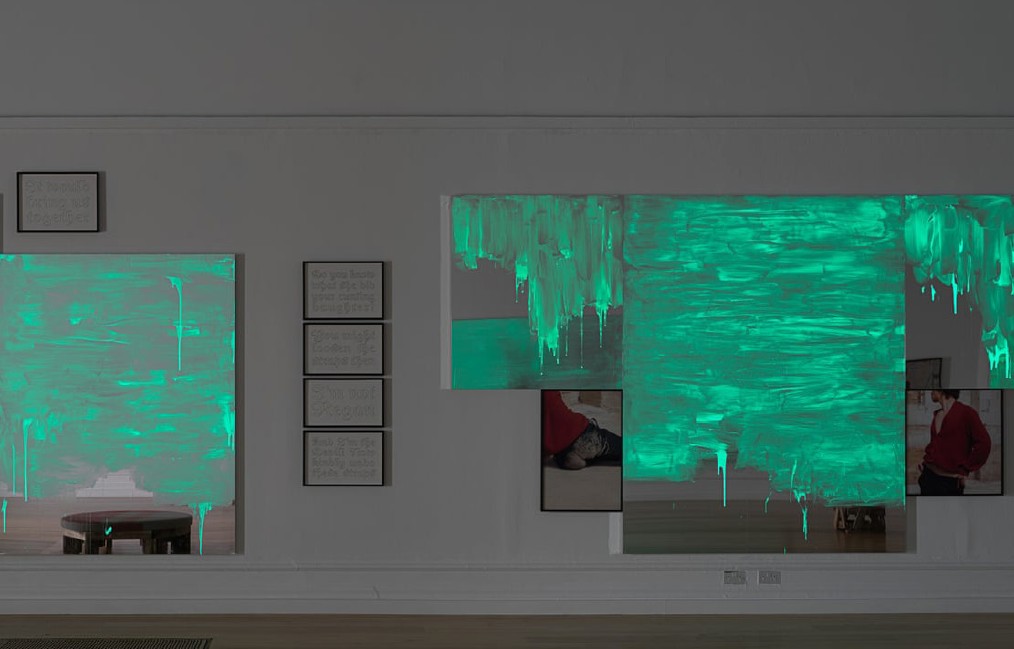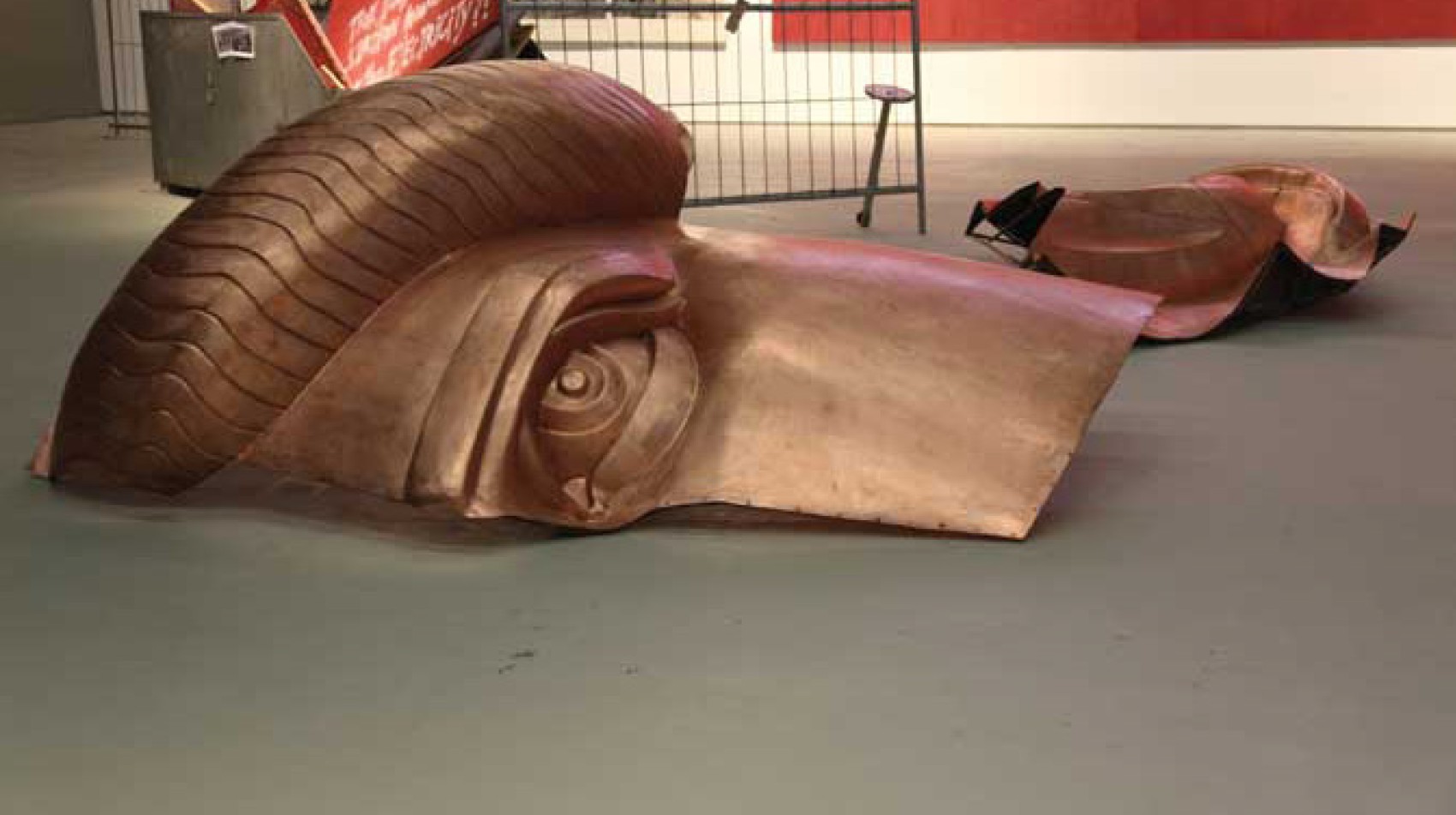Shezad Dawood's public installation 'HMS Alice Liddell'
A site-specific physical and AR spaceship that explores time travel, steampunk, architectural and science fiction references.
The installation HMS Alice Liddell (2022) in London’s St Pancras Station is named after the women’s rights campaigner who is thought to have inspired the character Alice from Lewis Carroll’s novel Alice in Wonderland; the original manuscript for which sits in the nearby British Library. Dawood’s sculpture imagines a new travel vessel, reconfiguring the past to suggest the importance of shared journeys into possible collective futures. SOUTH SOUTH interviewed the artist to find out more about the work.
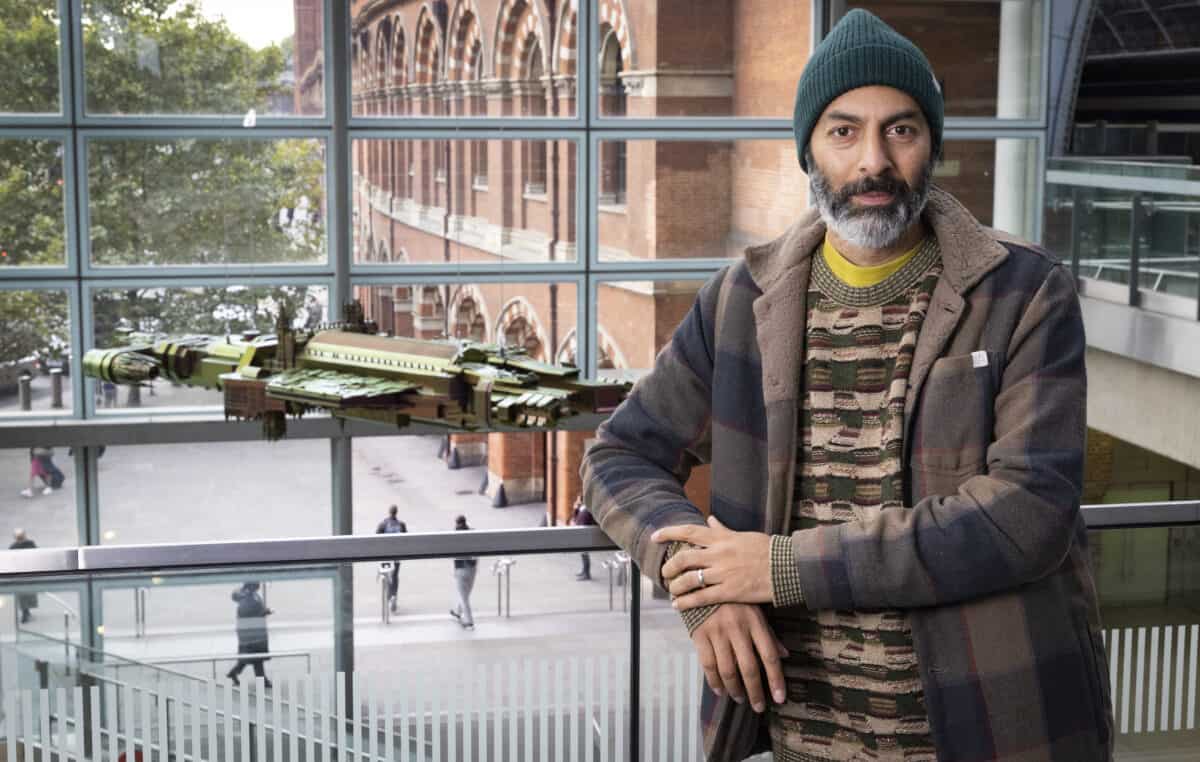
Artist Shezad Dawood’s ‘HMS Alice Liddell’, an installation commissioned by St Pancras International station as part of ‘The Wires’ arts project. PA Photo. Photo: Matt Alexander / PA Wire. Sourced from FAD Magazine.
SOUTH SOUTH (SS): The installation HMS Alice Liddell draws on a variety of references, including science fiction, steampunk, architecture and literature. You consider travel both physically and temporally, presenting a vessel within which to travel while also taking into account the past, present and future. Could you share more about these broader thematic references and your considerations on time?
Shezad Dawood (SD): I’ve always been interested in time travel as a conceptual way to unpick the past and the future simultaneously. The present is always a shifting apex between the two and represents the opportunity to unlock the imagination of artists, and collaborators alike. St Pancras and the surrounding Kings Cross neighbourhood has seen rapid regeneration in recent years, but also hosts a rich and multilayered history, spanning the industrial past to the technology firms of today. I actually grew up not far from the site, so was interested to look at these overlaid narratives, also in terms of their literary antecedents. For example, I see Alice in Wonderland as a key work of proto-science fiction, but also wanted to speak to William Blake’s Dark Satanic Mills, in terms of how he saw the link between extractive capitalism and wealth inequality with the birth of the Industrial Revolution. The distinctive use of colour I’ve developed over many years in the polychrome finish of my sculptural work, is also a way to both reflect and connect to audiences of today. And this links the sculpture back to temporality and its location, as it literally changes colour according to ambient light, your vantage point and the time of day.
SS: The installation also reflects elements of William Henry Barlow’s engineering of the station itself, as well as Sir George Gilbert Scott’s gothic spires of the now St. Pancras Renaissance Hotel. In addition to this, the sculpture is named after and inspired by Lewis Carroll’s Alice in Wonderland. Following on from the first question, why was it important for you to embed these specific references into your conceptual framing for the installation, as well as its current manifestation?
SD: Sir George Gilbert Scott’s neo-gothic spires at St Pancras and his Albert Memorial, along with Alfred Waterhouse’s Natural History Museum represent a high point of the Victorian imaginary, and a level of craft and detail that just wouldn’t be possible today, not least on economic grounds. These three structures in the built environment, loomed large in my childhood imaginary, again as a kind of counterintuitive and proto-sci-fi set of propositions. In that, although they are real buildings, they also engage in a kind of speculative realism. Like Venice, they continue to exude an otherworldly, and unreal quality, having more to do with a repressed imaginary also embodied in Alice in Wonderland. I was also interested in titling the piece after the real-life inspiration behind Alice in Wonderland, to connect it back to real audiences – Alice Liddell like most of us had a full and multifaceted story, going on to be a possible love interest of Queen Victoria’s youngest son, and being the first president of the Emery Down Women’s Institute in the New Forest.
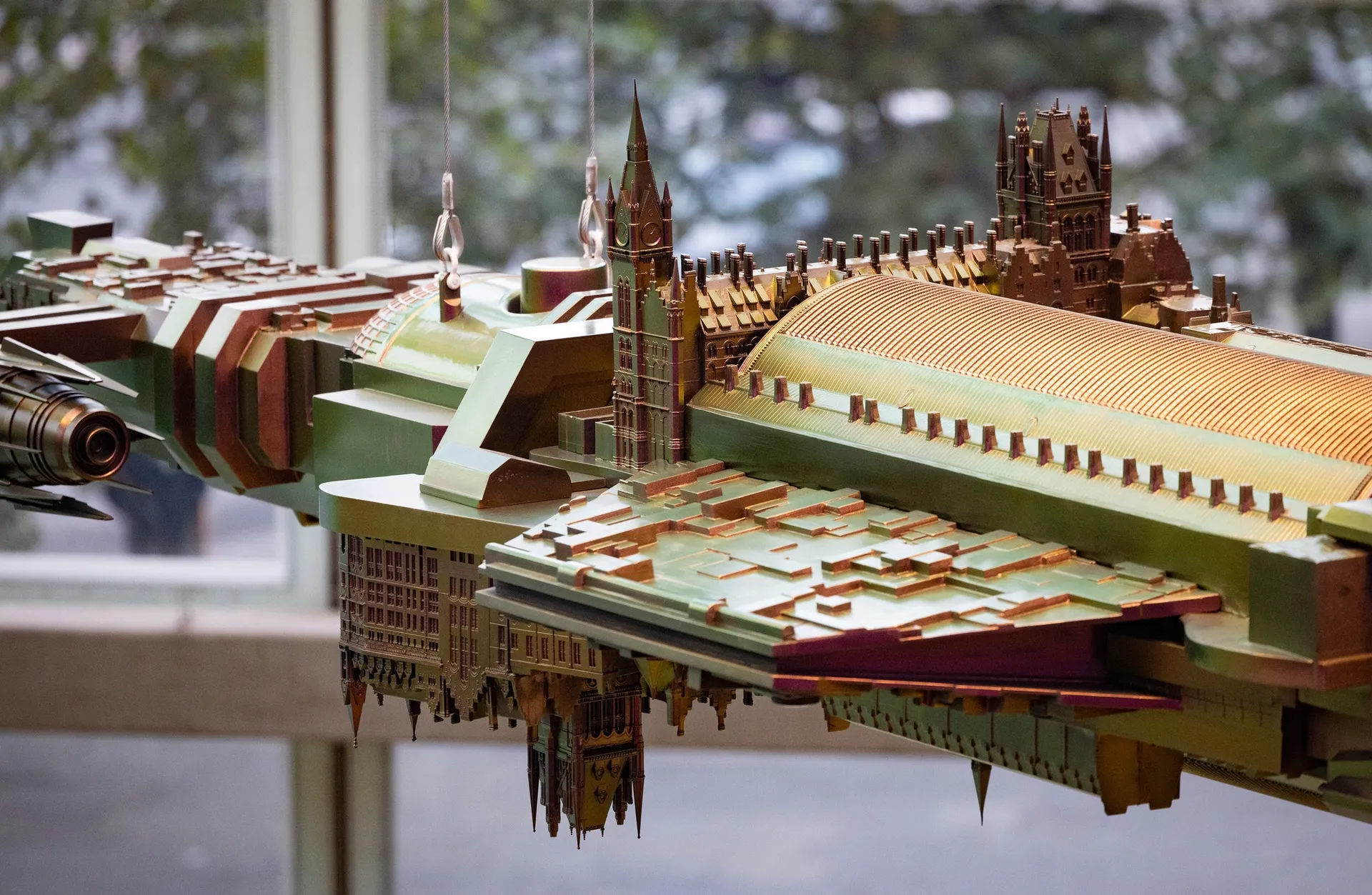
Artist Shezad Dawood’s ‘HMS Alice Liddell’, an installation commissioned by St Pancras International station as part of ‘The Wires’ arts project. PA Photo. Photo: Matt Alexander / PA Wire. Sourced from FAD Magazine.
I’ve always been interested in time travel as a conceptual way to unpick the past and the future simultaneously. The present is always a shifting apex between the two and represents the opportunity to unlock the imagination of artists, and collaborators alike.
SS: The installation is both a physical object and an AR interactive piece. How is this engagement with both the physical and digital an extension of your practice? Why do you think this intervention works in the space it is shown in the station?
SD: I’m really engaged with this space between the physical and the digital, I don’t see them as opposed, and in fact love the way they allow people to engage with a work in multiple ways. The sculptural object is suspended in mid-air, poised to exit the glass cube in which it is sited and go “through the looking glass”. The AR functionality, which audiences can access by scanning a nearby QR code, then extends this possibility, and allows the steampunk spaceship that is HMS Alice Liddell to take off and loop-the-loop within the station. The psychedelic landscape in the AR draws on iconic references from Alice in Wonderland (you can encounter the caterpillar atop a set of toadstools), and William Blake’s Dark Satanic Mills. I think it adds an additional layer of wonder and activates the station and its architecture and makes you look again, even at the physical object and make connections between – for example – Gilbert Scott’s original clocktower and its recreation within the sculptural work. Those kinds of sightlines are really important to me, as they connect a work back to its location and re-engage audiences with their surroundings. A busy station like St Pancras can easily be overlooked as people otherwise rush past to get to work or make their train connections.
SS: Collaboration is an important part of the way you work. The AR features a newly commissioned song by JayaHadADream, a member of the Nottingham-based, all-female music collective WondHERland. Audiences will be able to tune into a series of podcasts produced by WondHERland in dialogue with the themes present in your work. Could you share more about how this collaboration came about and your thoughts on what the song and the podcasts add to the experience of the installation?
SD: I was keen, as I am with all my projects, to introduce a set of voices and collaborators. Given the reference to Alice Liddell and her role in the Emery Down Women’s Institute, but also my own view that the best ‘stories’ allow reinvention and repurposing according to the needs of the day and shifting cultural positions, I was keen to work with WondHERland to open out some of the ideas I was playing with to their interpretations and voices. I think in that way stories are a kind of relay race, where you pass on and share agency. I also think WondHERland and JayaHadADream are immensely talented and were able to take aspects of the project down roads I wouldn’t have thought of. The collaboration, which manifested as a new song by Jaya, a
podcast series and a zine by the collective, extended and developed my own interests in subjects such as contemporary wonderlands, urban culture in Nottingham and ideas of the post-human –extending from Donna Haraway and Octavia Butler, among others – in new directions. Given that St Pancras extends along the East Coast to Nottingham as well as via the Eurostar to Paris, Brussels and beyond, I felt it was really important at this time of resurgent nationalism to inject a counter-narrative of diversity and both cosmopolitanism and urbanism, which their voices bring to the project.
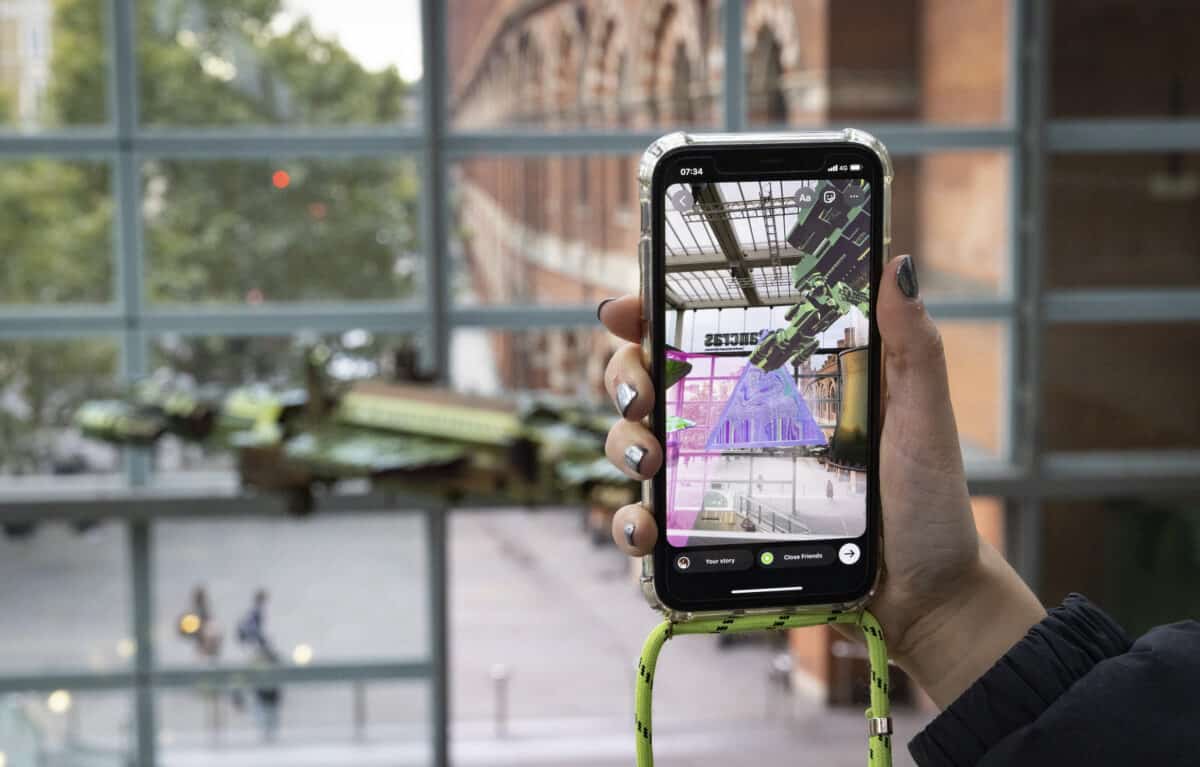
Artist Shezad Dawood’s ‘HMS Alice Liddell’, an installation commissioned by St Pancras International station as part of ‘The Wires’ arts project. PA Photo. Photo: Matt Alexander / PA Wire. Sourced from FAD Magazine.
I’m really engaged with this space between the physical and the digital, I don’t see them as opposed, and in fact love the way they allow people to engage with a work in multiple ways.
CREDITS
Images sourced from FAD Magazine

